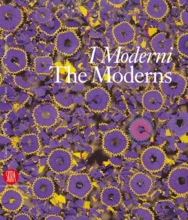Curator:
Carolyn Christov-Bakargiev (born 1957 in Ridgewood, USA; lives and works in Rome, Italy and New York, USA).
Description:
Exhibition at the Castello di Rivoli in Turin, Italy curated by Carolyn Christov-Bakargiev. Artists included were aluk Akakçe, Ricci Albenda, Massimo Bartolini, Betta Benassi, Tacita Dean, Tom Friedman, Liam Gillick, Arturo Herrera, Evan Holloway, Brian Jungen, Jim Lambie, Daria Martin, Julie Mehretu, Jun Nguyen-Hatsushiba, Jorge Pardo, Paul Pfeiffer, Susan Philipsz, John Pilson, Simon Starling, Sarah Sze, Piotr Uklanski, Gary Webb, and with a ‘Soundtrack’ to the exhibition selected by Anthony Huberman with sounds by Kim Cascone, Richard Chartier, Farmersmanual, Bernhard Günter, Testu Inoue, Massimo, Kaffe Matthews, Carsten Nicolai, Tu m’, Carl Michael von Hausswolff and Yasunao Tone.
“The term ‘modern’—and all its derivatives such as ‘modernity,’ ‘modernization’ or ‘modernism’—has changed meanings so many times since its first usage in antiquity that it is impossible to define accurately. Yet it is a term that is repeatedly used whenever there is a consciousness of a new epoch being formed. Recently, the notion of ‘modern’ has been associated with the art and culture from the mid-nineteenth century to the 1960s. The ‘modernists’ were forward-looking and made radical experiments with form and language. Obsolete during the last thirty years of postmodernism, modernism is again addressed in the work of a generation of contemporary artists who have grown up during the digital age.
“A new appreciation of experimentation with form and composition, and a sense of agency reminiscent of similar modernist impulses, seems to have emerged.
“But why modernism in our ‘postmodern’ digital age? It is the digital age itself that ushers in a new interest in modernity. This is an age defined by a technological surge associated with notions of progress, an age comparable to the late nineteenth-century world when aesthetic modernism was shaped. In the digital world, great attention is paid to networks and communities, and both signal a renewed interest in the visionary models of modernist utopian vanguards. The digital mind is project-based, encouraging an ability to make choices, to have a point of view and a perspectival gaze.
“Paradoxically, postmodernist relativism paved the way for an appreciation of ‘difference’ and diverse notions of cultural practice around the world, yet what this new cultural interchange brought to the fore, was the urgency felt in many postcolonial contexts to reassess modernism. Finally, the international economic and political situation today reveals tensions that were unexpected even ten years ago.
“A sense of the inadequacy of relativistic models to harness this new landscape suggests an urgency similar to other historical periods when modern movements emerged. The digital world is internationalist, as were the modernists; the digital world aims to go beyond the local/global dichotomy while at the same time achieving a reach broader than anything the modernists achieved.”
—Carolyn Christov-Bakargiev, “The Moderns,” Castello di Rivoli website.


